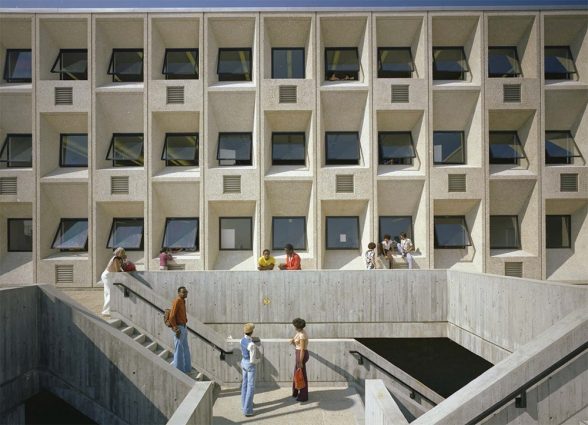This website uses cookies
This website uses cookies to enable it to function properly and to analyse how the website is used. Please click 'Close' to accept and continue using the website.


Heroic: Concrete Architecture and the New Boston 1960 – 1976
Mark Pasnik, Michael Kubo and Chris Grimley (Monacelli Press, 435pp, £35)
Reviewed by Elain Harwood

Unlike Barnabas Calder’s buildings in London or Glasgow, the urbane, historic peninsula that is Boston, Massachusetts does not immediately impress as a brutalist city. Heroic makes you think again. One of the US’s great intellectual capitals and home to its earliest struggles for independence, its modern architecture is not confined to the well-known buildings by Le Corbusier, Aalto and Saarinen at Harvard and MIT.
It’s a city not only of C18 and C19 brick but also of big, blunt granite warehouses and offices that testify to its prosperity. It was also among the first to suffer economic stagnation in the C20, and the flight of the middle classes from its downtown amid class and ethnic rivalries fuelled by political corruption. Change came when in 1960 the incoming mayor John F Collins brought in the visionary Edward J Logue, who had already replanned New Haven and commissioned the city’s leading modern buildings. Logue understood the value of design, and brought architects from Yale like Paul Rudolph, having already collaborated on the New Haven car park, to work alongside those from Harvard, led by Walter Gropius, J Lluís Sert and the Architects Collaborative. He commissioned a master plan from a young Harvard graduate, I M Pei, and held a competition for a new city hall as the focus of a new district of government offices which would also relate to the nearby historic buildings such as the Faneuil Hall of 1740. It was won by the relatively unknown trio of Gerhard M Kallmann, British-born N Michael McKinnell, and Edward F Knowles from New York, with a building in the spirit of Le Corbusier’s monastery of La Tourette, not tall but very, very bold. Monumentality was important to the site and to America’s sense of its new importance. Its neighbours include a stunning garage by Kallmann and McKinnell, a massive uncompleted Government Service Centre by Rudolph, and buildings from other parts of the city including Pei’s Christian Science Centre and buildings at Harvard
and MIT.
‘Active neglect’ of City Hall by later administrations is a kind description for a concerted lack of maintenance. Its proposed demolition in 2007 prompted the Heroic Project, with an exhibition by campaigners who rejected the term ‘brutalism’ for that favoured by the Smithsons for their own avant-garde predecessors. The 1960s are to us what the 1920s were for them. Other buildings are under threat, such as Rudolph’s Blue Cross Blue Shield Building, while Sert, Jackson & Associates’ Martin Luther King Jr Elementary School was demolished in 2014. This books shows how bold, centralised action could rejuvenate a central area, and how fragmentary commercial activity and investment is destroying that culture through a lack of long-term vision. There are interviews with many of the surviving architects, but the authors’s eloquence sets this book apart, plus a joyous passion and great photographs: ‘voices from the Heroic era call for us to take the mantle back again, to rise to principles and aspirations that today seem more urgent than ever. They ask: “can we be heroic again?”’ Why settle for nostalgia or porn when you can have books that really make you think.
We are still populating our book review section. You will be able to search by book name, author or date of publication.

Become a C20 member today and help save our modern design heritage.